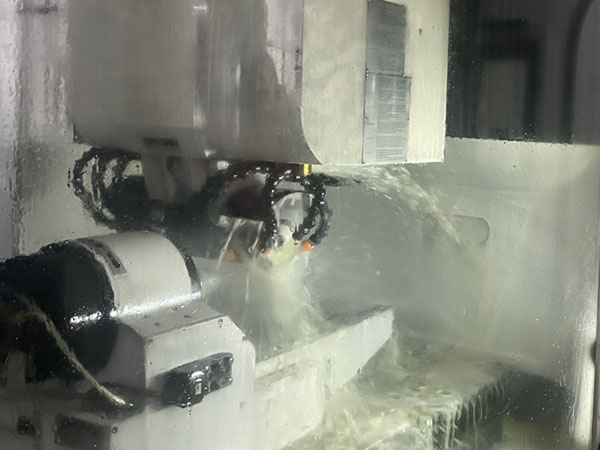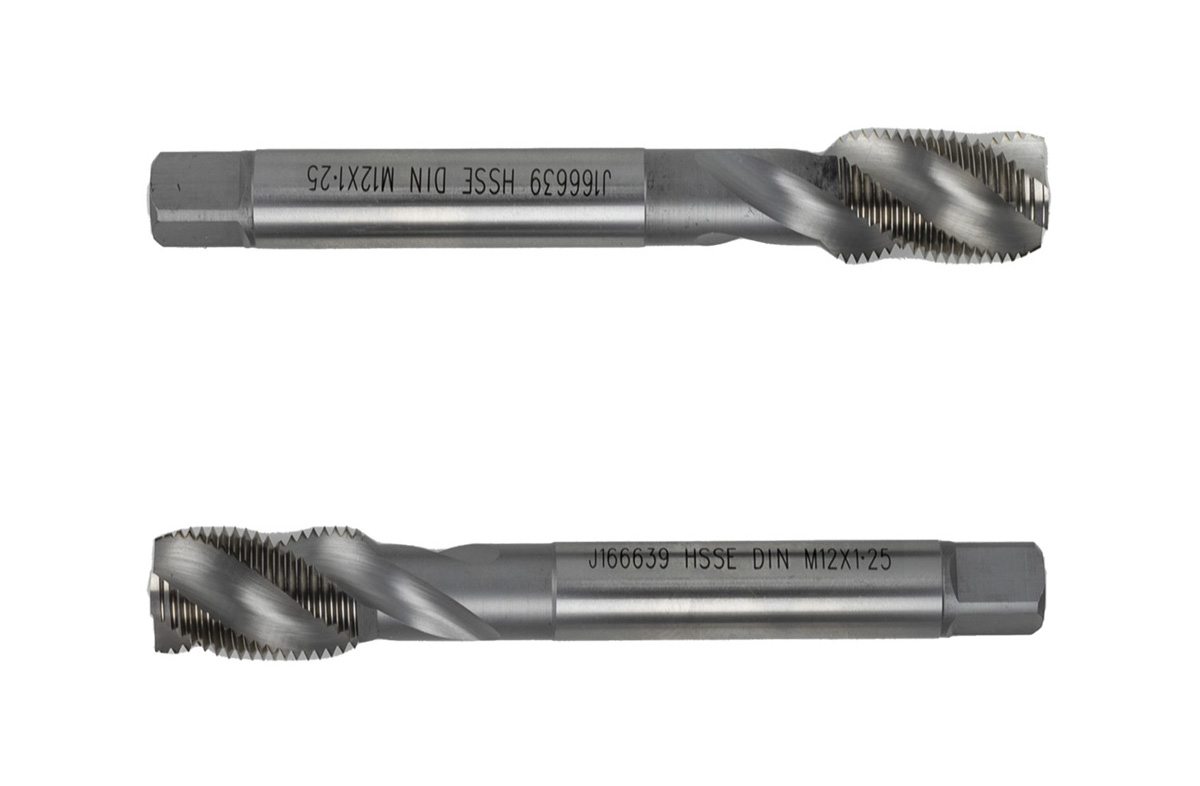
HSS/HSSE Taps: Essential Precision Tools in Mold Manufacturing
In mold manufacturing, thread machining directly impacts assembly precision and service life. Whether for injection molds, die-casting molds, or stamping molds, selecting the right tap based on material properties is crucial. HSS (High-Speed Steel) and HSSE (Cobalt-Containing High-Speed Steel) taps are widely used in the industry due to their superior performance. This article explores their characteristics and practical application techniques.

Challenges in Mold Manufacturing and the HSS/HSSE Solution
1. Three Major Challenges in Machining Mold Steel
- Hardness Paradox: Hardened steels (HRC48-52) require taps with both high hardness and toughness. Traditional HSS taps are prone to chipping, while carbide taps are costly.
- Heat Sensitivity Trap: In die-casting mold machining, localized temperatures exceed 600°C, causing red-hardness loss and dimensional instability.
- Microstructural Damage: If the thread root of a mirror-finish mold exceeds Ra0.4μm in roughness, stress concentration may lead to cracking.
2. Core Requirements for Taps in Mold Manufacturing

Mold steels (e.g., SKD11, NAK80) undergo heat treatment, reaching hardness levels above HRC50, necessitating wear-resistant taps.

Mirror-finish molds require thread surfaces below Ra0.4μm to prevent scratches that affect product demolding.

Specialized taps are needed for deep holes and microthreads to prevent breakage or accuracy deviations.

By integrating material innovation, process optimization, and structural design, HSS/HSSE taps systematically address challenges in machining high-hardness materials, surface quality control, and complex structures.
3. Comparison of HSS and HSSE Taps
| Characteristic | HSS Taps | HSSE Taps |
|---|---|---|
| Material Composition | Tungsten-molybdenum high-speed steel | High-speed steel with 5%-10% cobalt |
| Heat Resistance | Up to 550-600°C | Up to 600-650°C |
| Application Scope | General mold steels (HRC≤45) | Hardened steels, stainless steels, and difficult-to-machine materials |
| Cost-Effectiveness | Affordable, suitable for standard machining | Higher cost but 2-3 times longer lifespan |
Application Guide for Typical Mold Scenarios
Scenario 1: Microthread Machining on Injection Mold Inserts


- Ultra-fine grain HSSE (ASTM grain size 12) enhances bending resistance.
- Dual rake angle design (10° at entry → 6° in cutting section) reduces axial force by 30%.
- Results: After machining 800 parts, thread gauge pass rate remains at 100%, reducing costs by 60%.
Scenario 2: Cooling Water Channel Threads in Die-Casting Molds


- 50° high-helix angle + variable pitch flute design (dense chip evacuation in the front, anti-chatter in the rear).
- Internal cooling oil channels (oil pressure ≥5MPa) maintain cutting zone temperature below 180°C.
- Customer Case: A leading automotive die-casting company achieved a 3× increase in efficiency with ISO 2-6H thread precision.
Scenario 3: Thread Repair in Stamping Die Guide Components


- Extended anti-vibration shank design (length-to-diameter ratio ≤15:1), with a hardness gradient from HRC58 to 45.
- Back-tapered cutting edges (0.02-0.05mm/100mm) compensate for machine rigidity deficiencies.
- Test Results: Post-repair thread concentricity ≤0.015mm, matching new mold standards.
Scenario 4: Ultra-Fine Thread Machining in Glass Molds


- HSS substrate + DLC (Diamond-Like Carbon) coating reduces friction coefficient to 0.1.
- Six-flute staggered tooth design eliminates chatter marks, combined with ultrasonic-assisted cutting.
- Results: Achieved surface roughness of Ra0.18μm, with tool life reaching 80% of carbide taps.
Scenario 5: Multi-Cavity Precision Module Machining


- Gradient cobalt-content taps (10%Co at cutting edge / 8%Co in middle section / 6%Co at shank).
- Adaptive coating technology (AlCrN on cutting edge, TiCN on flute sides).
- Production Validation: Reduced tool changes by 70% and cycle time by 25%.
Five Practical Tips to Extend Tap Lifespan
1. Material Selection Principles
- General mold steels (HRC<40): Use HSS taps.
- Hardened steels/stainless steels: HSSE taps are a must.
2. Coating Selection Advice
- TiN (Yellow): General-purpose, cost-effective.
- TiAlN (Black): Suitable for high-temperature alloys.
- DLC (Silver): Best for mirror-finish machining.
3. Coolant Usage Guidelines
- Aluminum mold machining: Use oil-based coolant.
- Cast iron mold machining: Compressed air chip evacuation is recommended.
4. Wear Warning Signs
- Thread dimensions exceeding tolerance.
- Noticeable increase in cutting noise.
- Chips turning deep blue or purple.
5. Routine Maintenance Best Practices
- Remove chip residue immediately after use.
- Apply rust-preventive oil during storage.
- Regularly inspect cutting edge wear.
Frequently Asked Questions
Q1: Should I use HSS or HSSE taps for machining DC53 mold steel?
→ HSSE taps (≥8% cobalt) are recommended. Demagnetizing before machining can improve efficiency by 20%.
Q2: How to remove a broken tap from a blind hole?
→ Three-step recovery method:
- 1. Soak in penetrating oil for 2 hours.
- 2. Use an EDM (Electrical Discharge Machine) to remove the broken tap.
- 3. Restore the thread with a thread repair tool.
Q3: When should a tap be replaced?
→ Use a thread gauge: If torque increases by 15% when inserting a GO gauge or a NO-GO gauge screws in more than 1.5 turns, replace the tap immediately.
Conclusion
Precise Tap Selection Creates Greater Value
Proper selection and usage of HSS/HSSE taps ensure high-quality and cost-effective thread machining in molds. By optimizing material selection, machining parameters, and operating procedures, significant efficiency gains can be achieved. We offer over 30 specialized mold tap specifications and support custom non-standard solutions to help you tackle unique machining challenges.
OEM Capability
 We like to do design according to all the customers' requirements, or offer them our new designs. With strong OEM/ODM capabilities, we can fill your sourcing demands.
We like to do design according to all the customers' requirements, or offer them our new designs. With strong OEM/ODM capabilities, we can fill your sourcing demands. Categories
| HSS-PM Taps | HSSE-M42 Taps |
| HSSE / HSS Taps | Spiral Flute Taps |
| Straight Flute Taps | Spiral Point Taps |
| Multi-function Taps |
| Solid Carbide Drill Bits | Twist Drill Bits |
| Center Drill Bits | Indexable U Drills |
| Flat-end Milling Cutter | Ball Nose End Mills |
